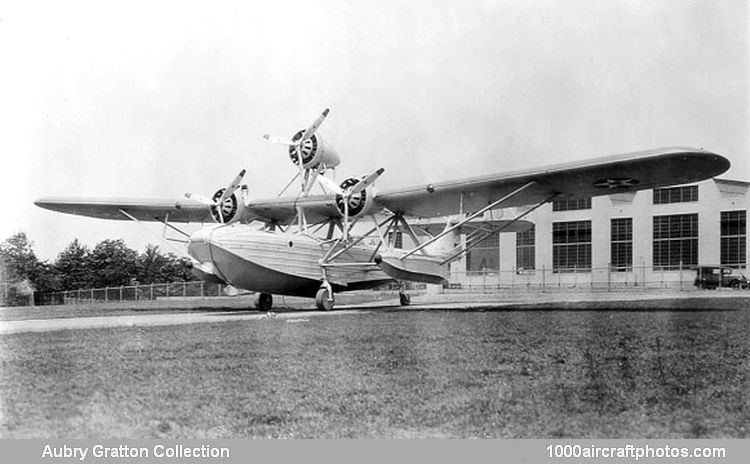04/30/2015. Remarks by Johan Visschedijk: "In 1930, Martin successfully underbid Consolidated to produce the latter's new XPY-1 long-range patrol flying boat. The Consolidated Model 9 XPY-1 Admiral was itself built to Naval Aircraft Factory designs for a 100 ft (30.48 m) span monoplane flying boat – the first to break the Navy's biplane tradition. Initially powered by two 450 hp Pratt & Whitney R-1340-38 engines in nacelles under the wings, later a third similar engine was added above the center section of the parasol wing. The XPY-1 (BuNo. A-8011) completed its tests in the first half of 1929, and at the end of June in that year Martin received contracts for its development and production.
The development contract was for a prototype designated XP2M-1 which was to have the same wing as the XPY-1, but located closer to the fuselage and with 575 hp Wright R-1820-64 engines in nacelles on the leading edge. Like the XPY-1, it was tested with a third engine above the center section; when this was deleted the designation unofficially became XP2M-2.
The production contract awarded Martin on June 29, 1929, was to build nine copies (BuNos. A-8412 to A-8420) of the XPY-1. The first appeared in February 1931 as the P3M-1, and was powered like the XPY-1 by two R-1340s; later aircraft on the batch were P3M-2s with 525 hp Pratt & Whitney R-1690-32 Hornet engines and an enclosure over the pilots' cockpits. The P3M-1s served with VP-10S for a time in 1931-1932, but these boats achieved 1ittle operational success and were used primarily for training and miscellaneous duties."
